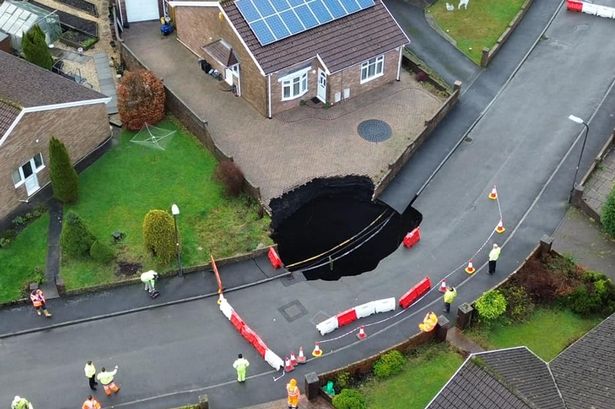A significant geological event occurred in South Wales over the weekend, with the emergence of a massive 50ft sinkhole that prompted the evacuation of more than 30 homes in the affected area. The sinkhole’s sudden appearance raised immediate concerns for public safety, resulting in a swift response from local authorities. Police established a comprehensive cordon around the site to prevent unauthorized access and ensure the safety of residents and onlookers. The dramatic event not only poses risks to the properties nearby but also highlights broader geological concerns regarding land stability in the region.
Authorities quickly mobilized resources to assess the situation and determine any potential hazards associated with the sinkhole. Emergency services worked collaboratively to evaluate the structural integrity of nearby homes, signaling the seriousness of the occurrence. The evacuations were deemed necessary to protect residents from possible further land subsidence or additional sinkhole formation. The local council and emergency responders kept residents informed throughout the process, emphasizing the need for safety while investigations into the sinkhole’s cause and impact began.
The dramatic nature of the sinkhole has captured public attention, stirring interest in geological phenomena within South Wales. Sinkholes often form as a result of underlying geological processes, including erosion, water drainage issues, or the dissolution of soluble rocks. This occurrence could provoke discussions around urban planning and land use in areas susceptible to such geological changes. Experts may be called to analyze the region’s geological stability and advise on future development to mitigate risks of similar incidents happening again.
Local residents faced substantial disruption due to the evacuations, with many temporarily displaced from their homes. Community support networks and local organizations stepped in to assist those affected, providing temporary accommodation and resources for families needing assistance. The response from the community showcased resilience and solidarity, as neighbors and local services came together to ensure that those impacted received necessary support during this uncertain time.
As investigations continued, authorities were keen to provide timely updates to the public to alleviate concerns regarding the safety of surrounding areas. Engineers and geologists began comprehensive assessments of the sinkhole and the surrounding ground to ascertain potential risks. Ongoing monitoring was established to track any further geological shifts, ensuring that safety remained the top priority even as crews began to understand the cause of the sinkhole.
In the aftermath of this event, discussions are likely to arise around the management of future geological risks and infrastructure resilience in the face of natural occurrences such as sinkholes. The incident could spark interest from urban planners and environmental experts to integrate geological considerations into future developments, ensuring residents’ safety in areas where land instability may be a concern. The situation serves as a stark reminder of how quickly natural disasters can arise and the importance of community preparedness and responsive governance in mitigating risks.














